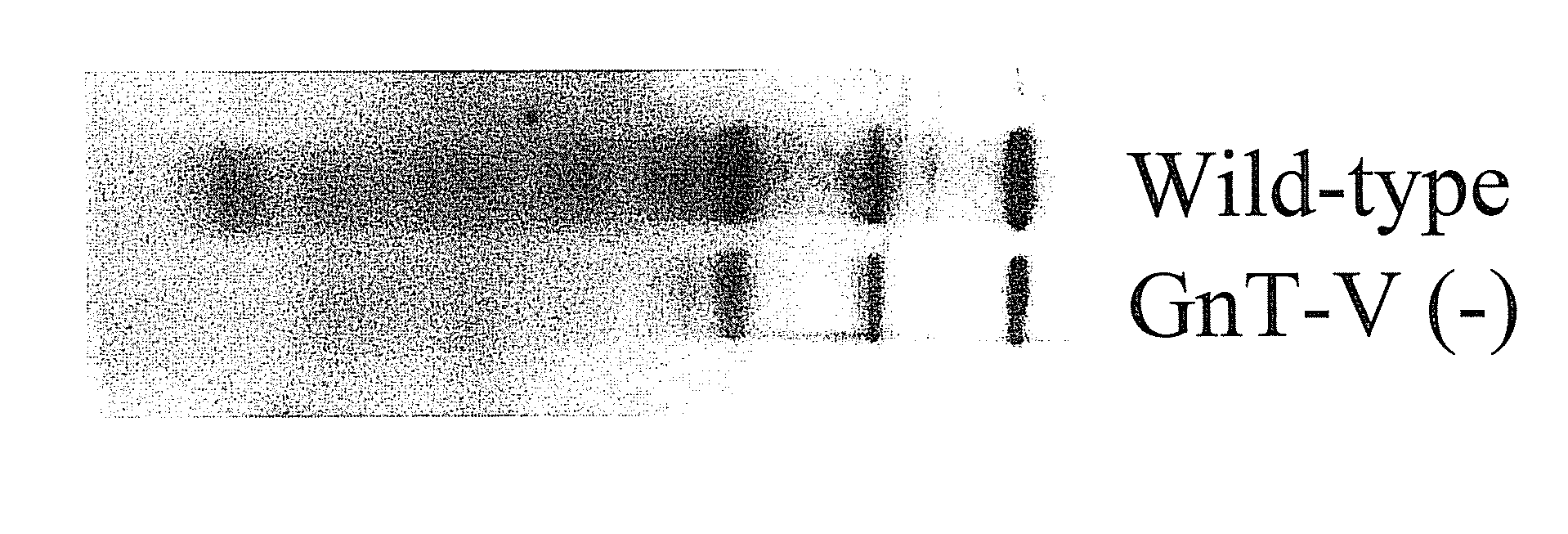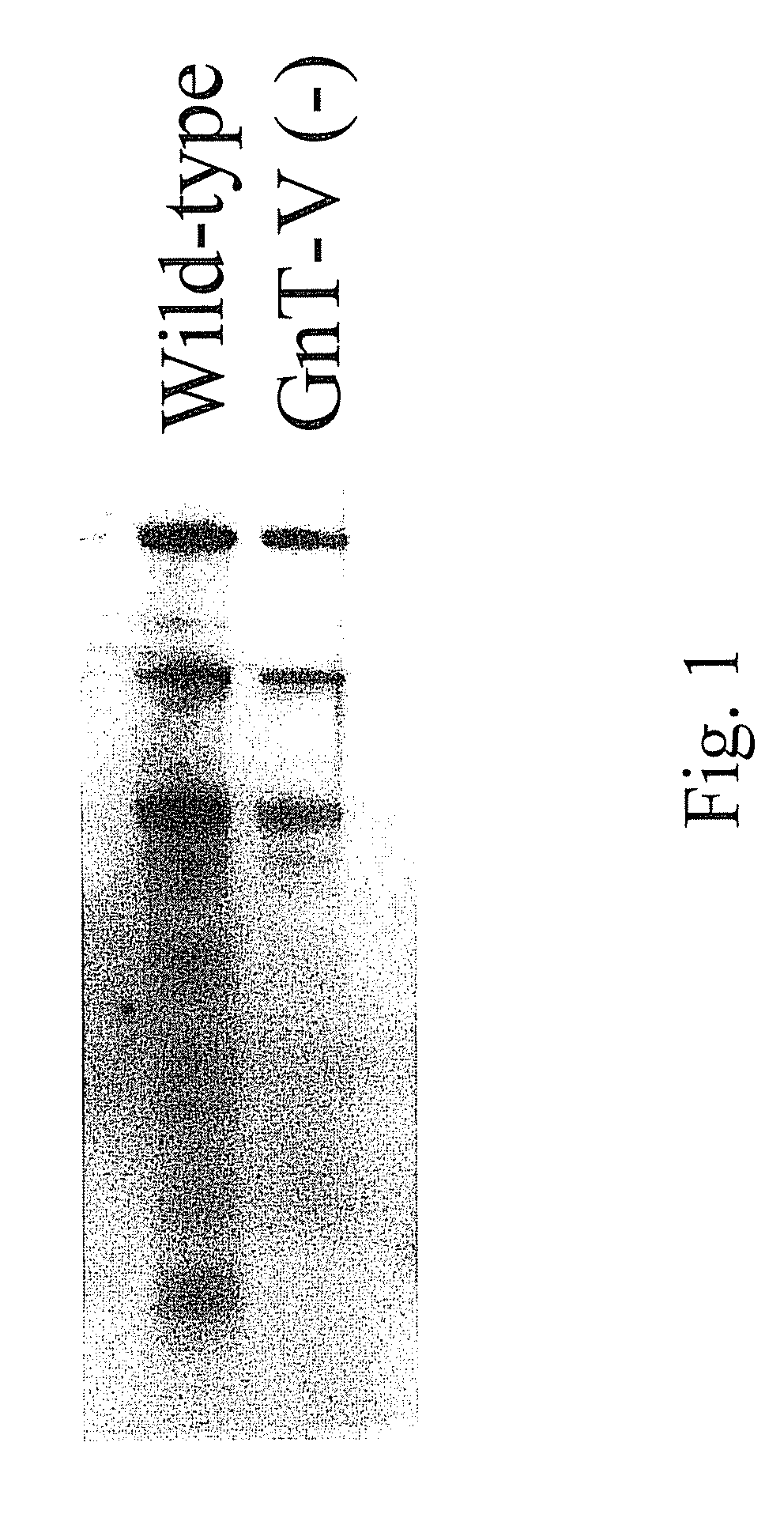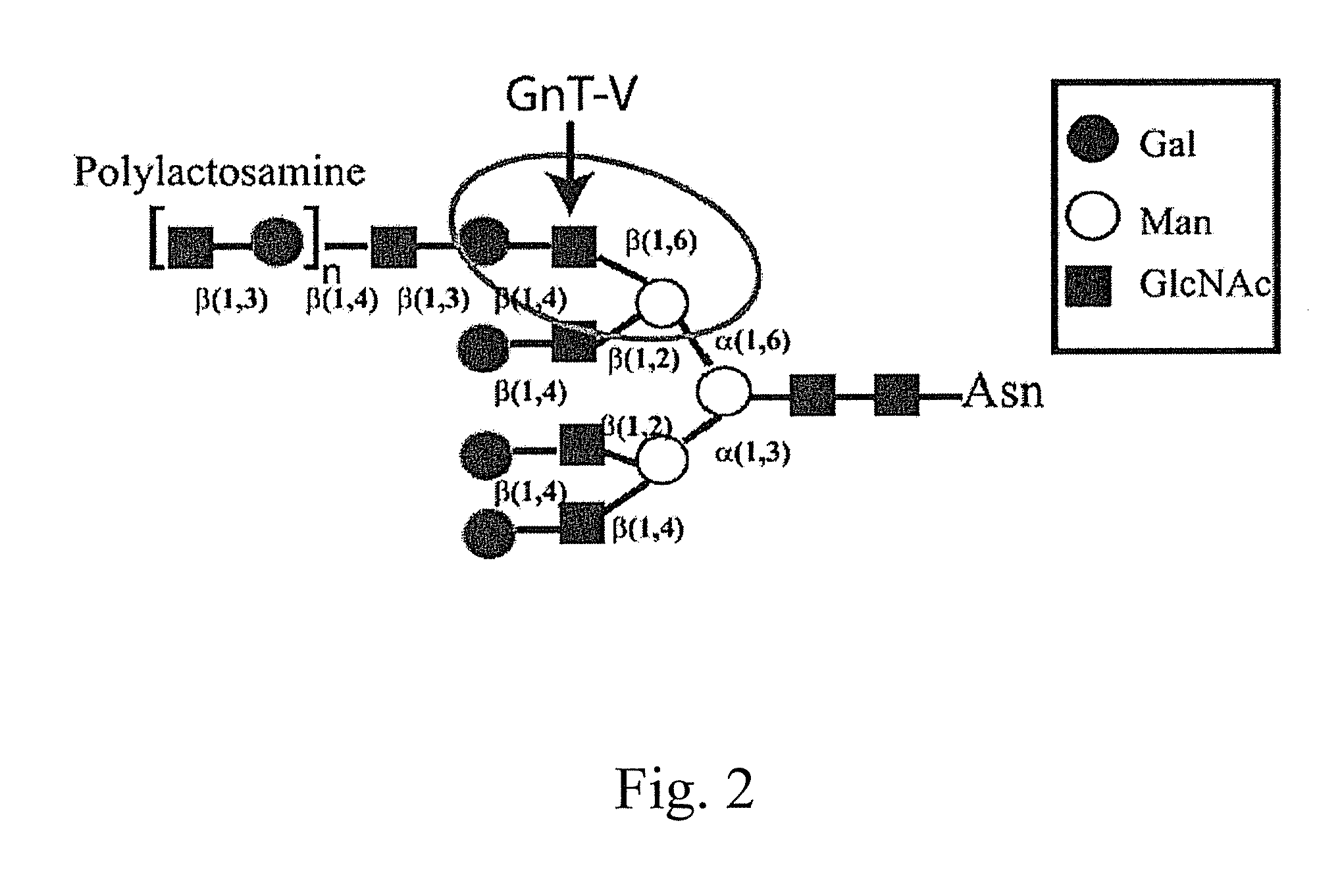Glycoprotein cancer biomarker
a cancer biomarker and glycoprotein technology, applied in the field of glycoprotein cancer biomarkers, can solve the problems of complex data sets, less than 25% of women are diagnosed, and not very useful in predicting proteins
- Summary
- Abstract
- Description
- Claims
- Application Information
AI Technical Summary
Benefits of technology
Problems solved by technology
Method used
Image
Examples
example i
Identification of Glycoproteins Associated with Invasive Human Breast Cancer Using Lectin Glycoproteomics
[0129]Glycosylation is a dynamic post-translational modification that changes during the development and progression of various malignancies. Oncogenically transformed cells demonstrate defined changes in glycan structures, in particular they show increased amount of a specific type of N-linked structure known as the β(1,6) branch (Pierce et al., 1997 Glycoconj J14:623-630). The enzyme known as N-acetylglucosaminyltransferase V (GnT-V) adds GlcNAc in a β(1,6) linkage to form the branch that leads to the formation of complex polylactosamine structures. During the oncogenesis of breast carcinoma, GnT-V transcript levels and activity are increased due to activated oncogenic signaling pathways. Elevated GnT-V levels leads to increased β(1,6) branched N-linked glycan structures on glycoproteins that can be measured by the binding of a specific lectin, L-PHA. L-PHA immunohistochemical ...
example ii
Targeted Glycoproteomic Identification of Biomarkers for Human Breast Carcinoma
[0137]Glycosylation is clearly the most complex set of post-translational modifications that proteins undergo during biosynthesis, and several specific types of glycan epitopes have been shown to be associated with various types of cancer (Kim and Varki, 1997. Glycoconj J 14:569-76; Hakomori, 2001. Adv Exp Med Biol 491:369-402). The glycosylation patterns of cell surface glycoproteins play important roles in mediating cell-cell and cell-matrix interactions. During oncogenesis, distinct signal transduction pathways are altered, leading to the differential expression of numerous genes. Genes known as glycosyltransferases (GT) and glycosyihydrolases (GH), responsible for the addition and removal of sugars on proteins in the ER and Golgi apparatus, can change activity during oncogenesis, causing different oligosaccharide structures to emerge on cell surface glycoproteins (Pierce and Arango, 1986. J. Biol. Che...
example iii
Focused Glycomic Analysis of the N-linked Glycan Biosynthetic Pathway in Ovarian Cancer
[0163]Epithelial ovarian cancer is the deadliest female reproductive tract malignancy in Western countries. Less than 25% of cases are diagnosed when the cancer is confined, pointing to the critical need for early diagnostics for ovarian cancer. Identifying the changes that occur in the glycome of ovarian cancer cells may provide an avenue to develop a new generation of potential biomarkers for early detection of this disease. Epithelial ovarian cancers are comprised of five major subtypes (serous, endometrioid, mucinous, clear cell, and transitional adenocarcinomas), with serous and endometrioid being the two most common types. Epithelial ovarian cancer arises in humans from the ovarian surface epithelium (OSE), epithelial inclusion cysts, or the tubal fimbria (Lee et al., 2007. J. Pathol. 211:26-35; Auersperg et al., 2001. Endocr. Rev. 22:255-288). Several oncogenes have been implicated in ovari...
PUM
 Login to View More
Login to View More Abstract
Description
Claims
Application Information
 Login to View More
Login to View More - R&D
- Intellectual Property
- Life Sciences
- Materials
- Tech Scout
- Unparalleled Data Quality
- Higher Quality Content
- 60% Fewer Hallucinations
Browse by: Latest US Patents, China's latest patents, Technical Efficacy Thesaurus, Application Domain, Technology Topic, Popular Technical Reports.
© 2025 PatSnap. All rights reserved.Legal|Privacy policy|Modern Slavery Act Transparency Statement|Sitemap|About US| Contact US: help@patsnap.com



